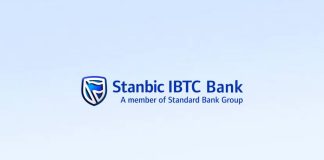World Stocks Index, on Thursday, June 7, took a leap, as such, the MSCI’s index of world stocks .MIWD00000PUS rose 0.2 percent to its highest since May 14.
Wall Street was also set for a positive open with Dow Jones and S&P 500 index futures up 0.1 to 0.2 percent. The tech-heavy Nasdaq .IXIC, however, was set for a dip from its record high.
The euro and bond yields rose on Thursday as investors priced in an early wind-down of European Central Bank stimulus, while renewed risk appetite drove world stocks to a 3-1/2 week high, Reuters reports.
The selloff in safe-haven Bunds and U.S. Treasuries drove money into riskier assets, especially financial stocks, despite investor anxiety over how a G7 leaders summit that kicks off on Friday will pan out in view of divisions over global trade.
Bank stocks, which tend to gain from higher bond yields, drove European shares up. The pan-European banks index .SX7P jumped 0.5 percent, supporting the STOXX 600 .
Banks remain the worst-performing sector in Europe year-to-date, however, having been dented by political risk in Italy.
In Europe the single currency EUR= hit its highest level since May 15 at $1.1838, and traded up 0.4 percent at $1.1815 in its fourth straight session of gains. It helped drive the dollar index .DXY down 0.4 percent to 93.295.
Germany’s benchmark 10-year bond yield DE10YT=TWEB rose in step with the euro, breaching 0.50 percent for the first time in two weeks on signs that the European Central Bank could soon call an end to its stimulus program.
The selloff in German Bunds spread across the Atlantic as the U.S. benchmark 10-year yield US10YT=RR hit a 2-1/2 week high of 2.9940 percent, edging closer to the 3 percent level it breached a month ago.
The ECB’s Chief Economist Peter Praet said on Wednesday that robust growth made the bank increasingly confident inflation was on its way back to target, raising chances it may reveal more about the end of the bond-buying program at next week’s meeting.
Praet’s comments took the market by surprise, given a recent slowdown in the euro zone economy.
Data on Thursday showed German industrial orders plunged unexpectedly in April, a fourth consecutive monthly drop.
“It’s a complex backdrop where ultimately the economy is not doing badly, but the economic surprises in Europe have not been to the upside,” said Antoine Lesne, head of EMEA strategy and research at State Street’s SPDR ETF.
“Bad momentum has eased the overall backdrop the ECB is navigating – but if you’re looking at the broader macro picture it is still positive for risk assets.”
Analysts at Bank of America Merrill Lynch said Praet’s speech showed the central bank was willing to look through the recent soft patch in euro zone data.
The risk-on moves across markets coincided with a calendar of potentially destabilizing political events.
The run-up to the G7 summit has been dominated by a widening divide over trade between U.S. President Trump and the club’s remaining six members.
But gauges of investor anxiety, including stock volatility, showed little sign of strain, flummoxing some investors.
The VIX, which measures volatility on the S&P 500 .VIX, was last trading at 11.79. It has fallen from more than 50 to less than 12 in just 83 days – a record decline, traders said.
In emerging markets, stocks .MSCIEF climbed 0.4 percent to a three-week high, supported by the weaker dollar. UBS analysts declared “buying time” for emerging stocks, upgrading Mexico, Poland and Colombia, while downgrading Brazil.














